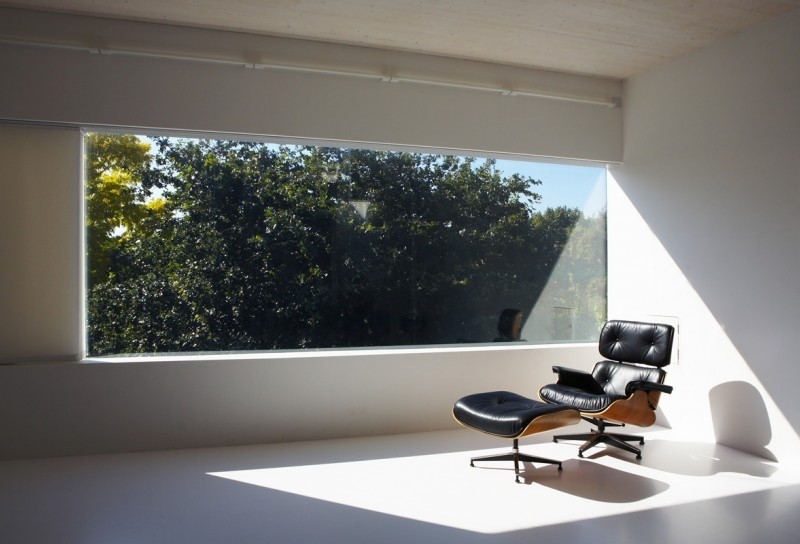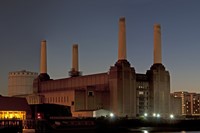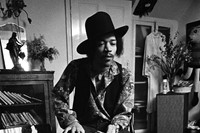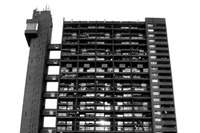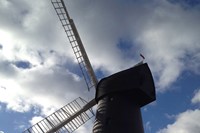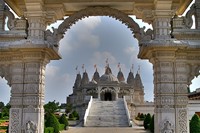London opens the doors of some of its most iconic buildings this weekend as part of Open House Weekend. Here, AnOther select their top 10 must see venues.
This weekend sees London take part in the 21st annual Open House Weekend. The best, biggest and most architecturally beautiful buildings will open their magnificent doors for the public to roam around as they please, and all for free. After the overwhelming success of previous years, 2013 has the largest selection of buildings to date, with 830 homes, businesses and schools taking part. Alongside the world famous landmarks there are a plethora of hidden gems, from palatial religious temples, to the homes of some of the world's most celebrated musicians and artists; together offering a rare opportunity to delve into the hidden history of our capital. In honour of the event AnOther presents top 10 favourites from the line-up...
1. Battersea Power Station
The immense building that is Battersea Power Station has kept its doors firmly shut since its closure in 1983. As the second largest brick building in Europe, the vast Art Deco structure has attracted a huge amount of interest over the years with plans for its redevelopment. All of them fell through until last year, when it was finally agreed that the Malaysian companies SP Setia and Sime Darby were going to undertake the huge task of renovating the property into luxury apartments. This is only the second time the Grade 2 listed building has been open to the public and it is the last chance to see it in all its original glory before renovation begins.
2. Container City
Situated opposite the O2 arena is a mound of vibrant shipping containers. A creative hub, containing tens of artists, musicians, designers and performers, Container City is fast becoming a desired location to set up camp in London. Reminiscent of a tiny seaside town with its colourful façade, porthole windows and friendly community atmosphere, this is a unique slice of modern London living.
3. Jimi Hendrix's flat at the Handel House Museum
The Handel House Museum was once home to the baroque composer George Frideric Handel, he spent the latter part of his life there, composing some of the most well-known pieces of classical music and opera of our time. Handel set a trend for musical residents and a couple of hundred years later the legendary Jimi Hendrix took up residence here between 1968 and 1969. Holed up writing songs and preparing for his upcoming concerts at the Royal Albert Hall, Hendrix surrounded himself with Handel's records as inspiration after learning the composer's tenancy preceded his own. The flat is currently used as offices for the museum but is still the only official residence of the late, great musical icon.
4. Trellick Tower
Designed by renowned modern architect Ernö Goldfinger, the Brutalist Trellick Tower caused controversy during its build in the early 70s. Local residents considered the looming structure to be an eyesore of their community and it quickly became a crime hotspot. However, the tower has since shaken its bad reputation and is now a grade 2 listed, desirable place to live, with flats regularly selling for prices as high as £375,000.
5. Brixton Windmill
Brixton is known for many things, but being an example of picturesque countryside is not one of them. However, it was originally home to wide expanses of open green space and a working windmill. As the city expanded the windmill fell into disrepair, but – after a few half hearted attempts at its restoration – it was brought back to life and working order in 2011.
6. Shri Swaminarayan Mandir
Over 5000 tonnes of Bulgarian limestone and Italian marble were used to build this lavish Hindu Temple. The first of its kind in Europe, every piece was hand carved in India and shipped to England to be put together like a giant 3D jigsaw puzzle. The impeccably intricate carvings and serene white interior reflect the holy nature of the building making it a place where ‘architecture becomes art, and art becomes architecture’.
7. Ed's Shed/ Sunken House
Commissioned in 2007 by photographer Ed Reeve, this cedar clad cube is barely noticeable to those who aren't looking for it. Surrounded by leafy green trees, architect David Adjaye designed the structure with the intention to both frame the landscape and become part of it. The building has been applauded for its reduced carbon footprint and its innovative, cost effective design.
8. Art Loo
Nestled in the heart of Soho, in St. Anne's Gardens, is a public toilet with a difference. Nicknamed the 'Art Loo' by locals, this egg shaped building is made from solid oak and as well as being there for general public convenience, doubles up as a very tiny art gallery. Etched glass and an illuminated door are decorated with hints to the sites grisly history – some 6000 bodies are buried in the graveyard below, many of whom were victims of the 1845 cholera epidemic – and the art displays rotate on a regular basis, to keep regular visitors entertained.
9. The View from The Shard
The newest addition to London's skyline is offering visitors the chance to take the vertigo defying trip up to their 72nd floor observatory deck. At 1017ft, The Shard is now the tallest building in London, with architect Renzo Piano referring to it as a 'vertical city', it houses numerous apartments, restaurants, offices and a luxury hotel.
10. Gap House
Built into a 2.3 metre wide alley between two listed buildings is the Gap House. Designed by architect Luke Tozer it has been described as a real life Tardis, although Tozer likes to think of it more like Mr Benn's wardrobe; a small door opening up into a magical wide world. The house is designed to be as eco-friendly as possible, using techniques such as rain water harvesting and solar panelling.
Text by Rhiannon Wastell
